Development of jet technology during World War II
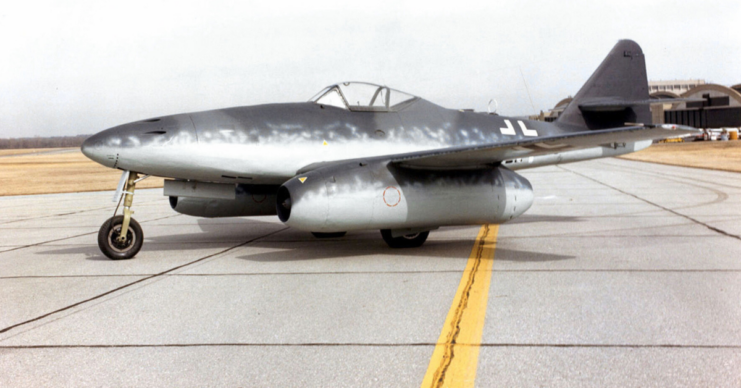
When exploring the advanced aircraft of the Second World War, German iterations, such as the Heinkel He 162 Volksjäger, the Messerschmitt Me 262 and Heinkel He 163 Komet often take center stage. However, the Allies were not far behind in the race to develop jet technology.
The British made a significant breakthrough with the invention of the first turbojet engine by Royal Air Force (RAF) officer Frank Whittle in 1930. Whittle’s innovation paved the way for the Gloster E.28/39, the Allies’ first jet-engine aircraft, which took to the skies in 1941. Following suit, the United States introduced its first jet fighter, the Bell P-59 Airacomet, which was put into service in October 1942.
Despite the production of 66 units, the P-59 failed to see operational action, due to its deficiencies in combat effectiveness, falling behind the latest piston-powered fighters. Its performance also fell short of expectations, with the RAF deeming it inferior to the Gloster Meteor. Consequently, the American jet fighter found its niche in pilot training, rather than frontline deployment.
Closing the gap
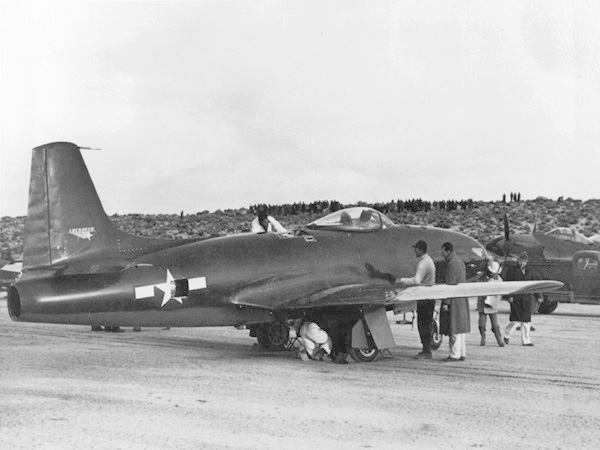
To catch up with the advancements made by Britain and Germany, the United States set out to develop the P-80 Shooting Star. Designed by Lockheed, it was the only Allied jet in WWII with its engine integrated within the fuselage.
The initiative to create the P-80 was prompted by the Allies’ first encounter with the Messerschmitt Me 262 in early 1943. Leveraging existing British jet research, the U.S. equipped the aircraft with the Halford H-1B Goblin engine to rival the performance of the Me 262.
Development began in May 1943, despite the absence of the engine from the UK. Under the direction of Lockheed’s Chief Engineer Kelly Johnson, a top-secret team of engineers was assembled to develop the prototype. The team worked tirelessly, putting in six 10-hour days a week, with the goal of completing the fighter jet in 150 days.
Producing a successful prototype

The Skunk Works team successfully produced the first prototype – the XP-80 Lulu-Belle – in early 1944, after 141 days of intensive work. Propelled by the British H-1B engine, Lulu-Belle took its inaugural flight on January 8 of that year and, in subsequent tests, exceeded 500 MPH at an altitude of over 20,000 feet. This achievement marked it as the first USAAF turbojet aircraft to surpass that speed in level flight
Following the first flight, Johnson remarked, “It was a magnificent demonstration, our plane was a success – such a complete success that it had overcome the temporary advantage the Germans had gained from years of preliminary development on jet planes.” This success prompted the development of additional prototypes.
Lockheed P-80 Shooting Star specs
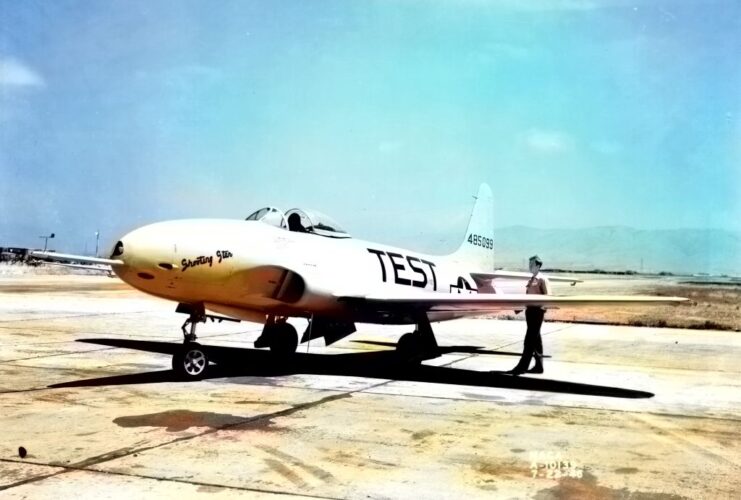
The P-80 Shooting Star’s development focus honed in on balancing the fuselage to ensure an even center of gravity. Pilots enjoyed a large, obstruction-free view from the cockpit thanks to its bubble canopy. As production ramped up, the original British engine gave way to an internally fitted Allison J33-A-35 engine, boosting 4,600 pounds of dry thrust. This upgrade allowed for speeds of Mach 0.76 and maintained a range of 825 miles.
Armed to the teeth, the single-seater P-80 housed a formidable array of weaponry. Its primary armament consisted of six .50 AN-M3 Browning machine guns located in the nose, accompanied by eight High-Velocity Aerial Rockets (HVAR) and two 1,000-pound bombs affixed to the wings’ hardpoints via specially designed rails. Due to the jet’s compact size, mounting additional weapons or munitions originally posed challenges.
Flying secret missions over Italy
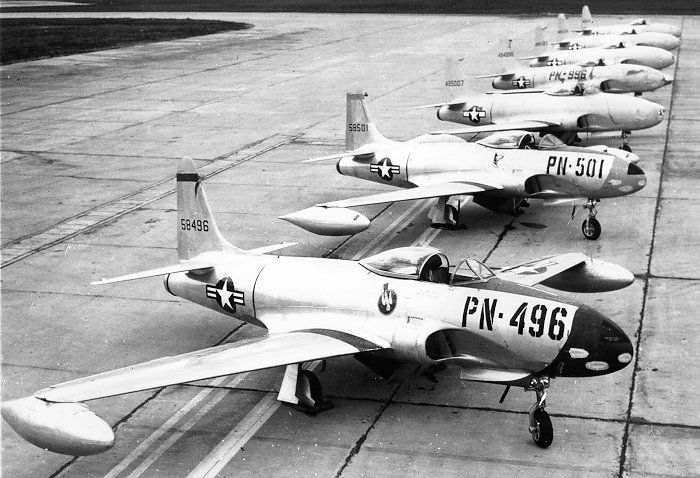
The USAAF was eagerly anticipating the deployment of the P-80 Shooting Star into the war, potentially even in combat against the German Me 262. A modest unit made up of just four pre-production YP-80As flew to Europe: two of these went to the United Kingdom for demonstration and familiarization flights, while the remaining two went to Italy to join with the 1st Fighter Group at Lesina Airfield.
In Italy, the YP-80As found themselves in an interesting situation. The Luftwaffe had already been using its own jet aircraft along the Italian Front, with Arado Ar 234B Blitz reconnaissance jets crossing over Allied lines on missions. The YP-80A had the potential to change this situation as the Luftwaffe jets couldn’t be intercepted by conventional Allied aircraft.
Officially, a YP-80A assigned to the 94th Fighter Squadron undertook two operational sorties in Italy. Although the details of these missions remain unknown, they were documented as non-combat engagements. Despite the initial plan being for the aircraft to be more involved in the conflict, production delays prevented this from occurring.
Death of Richard Bong
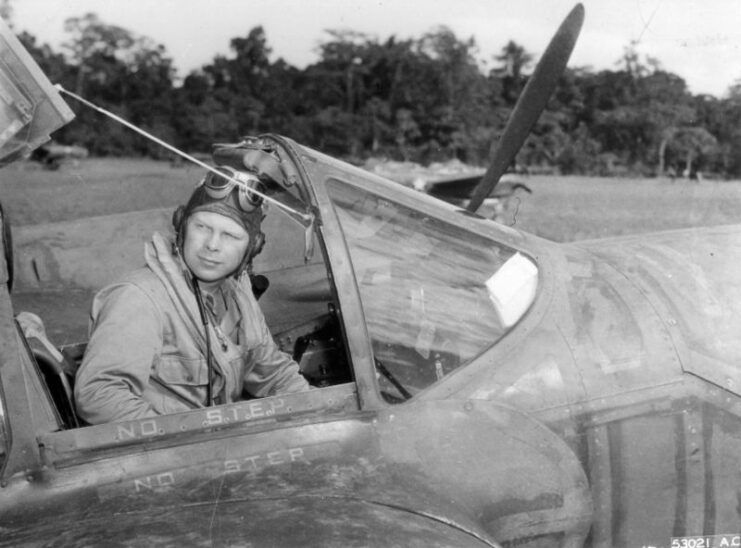
Maj. Richard Bong was America’s top flying ace during World War II, having served in the Pacific Theater. His first victory came in December 1942, followed by an additional four triumphs the following summer, leading to a promotion to captain. Bong’s tally of credited kills surpassed that of the renowned World War I ace Eddie Rickenbacker, totaling 40.
After his service in the USAAF, Bong became a test pilot. However, tragedy struck on August 6, 1945, while piloting a P-80 Shooting Star. A malfunction in the primary fuel pump occurred, and despite efforts to engage the auxiliary fuel pump, he tragically perished in an unsuccessful attempt to eject, due to his proximity to the ground.
Lockheed P-80 Shooting Star’s post-war service
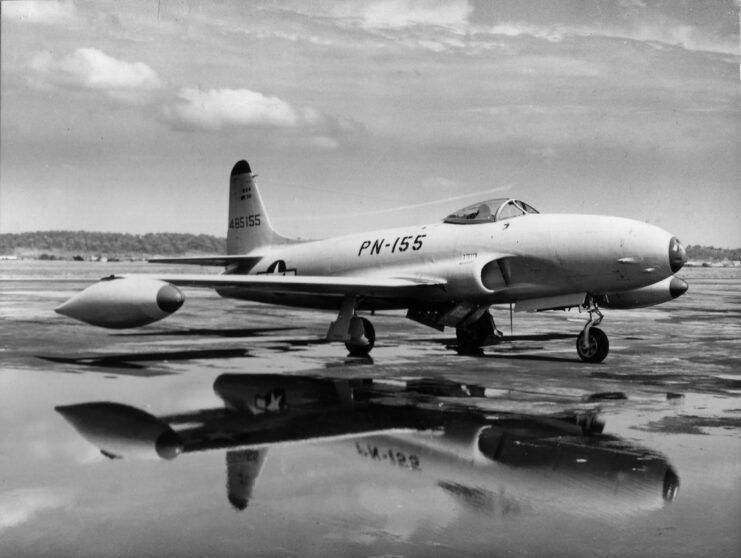
Following WWII, the P-80 Shooting Star continued its service in diverse capacities, notably as a fighter-bomber in Korea under the designation F-80. Some units of the P-80A were supplied to the US Navy, undergoing modifications for deployment aboard the USS Franklin D. Roosevelt (CVB/CVA/CV-42).
With production exceeding 1,700 units, the P-80 underwent various upgrades and transformations, eventually transitioning into the T-33 trainer. This version served in numerous air forces globally, totaling 6,557 produced units by 1959.
Beyond its operational roles, the P-80 left a lasting mark on aviation history by achieving several records. On June 19, 1947, a P-80R, piloted by Col. Albert Boyd, set the world speed record at 623.73 MPH. Additionally, the aircraft played a pivotal role in the advancement of aerial refueling, becoming the first jet to successfully undergo mid-flight refueling in a combat scenario.
Deployment of the Lockheed F-80 Shooting Star
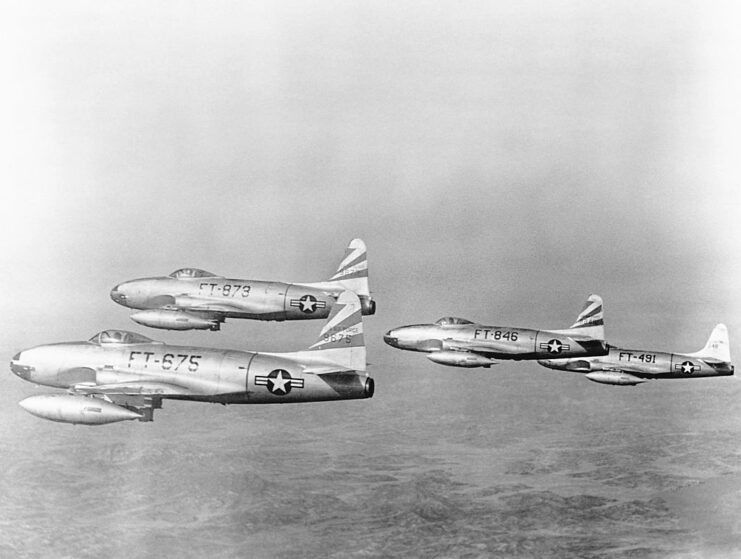
The most well-known variant of the P-80 Shooting Star was the F-80. Intended to be a high-altitude interceptor, it took on a number of roles throughout the Korean War, including as a photo reconnaissance aircraft (RF-80), a day fighter and a fighter-bomber. It notably flew combat sorties against North Korean-flown Mikoyan-Gurevich MiG-15s, as well as against Ilyushin Il-10 ground attack aircraft and Yakovlev Yak-9 fighters.
Most notably, the F-80C secured the first American jet-versus-jet kill during a dogfight against enemy MiG-15s on November 8, 1950, with pilot Lt. Russell Brown in the cockpit. An estimated 75 percent of enemy losses during the first months of the conflict were attributed to the aircraft. That being said, 368 were lost, the majority to ground fire.
Given its WWII-era origins, the F-80 was slower than anticipated. This eventually led to the North American F-86 Sabre taking over the aircraft’s combat role in Korea.
Lockheed P-80 Shooting Star’s legacy
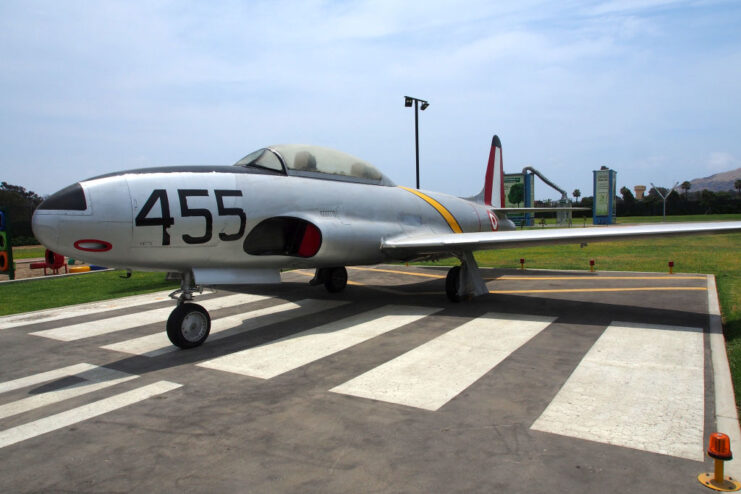
The P-80 Shooting Star was instrumental in propelling the progress of jet aviation in the US, and it played a vital role in shaping the trajectory of jet fighters. By showcasing the capabilities of jet-powered aircraft, the P-80 laid the groundwork for subsequent, more sophisticated designs like the F-86 Sabre and MiG-15 that emerged in the years to come.
More from us: The Mikoyan-Gurevich MiG-25 Scared the West – Until a Defector Exposed Its Secrets
The evolution and eventual deployment of the P-80 underscored America’s dedication to pushing the boundaries of aviation and securing dominance in the skies. While it may not experience the same level of renown as some of its counterparts, its significant contributions to jet aviation and the post-war period deserve recognition and appreciation.
